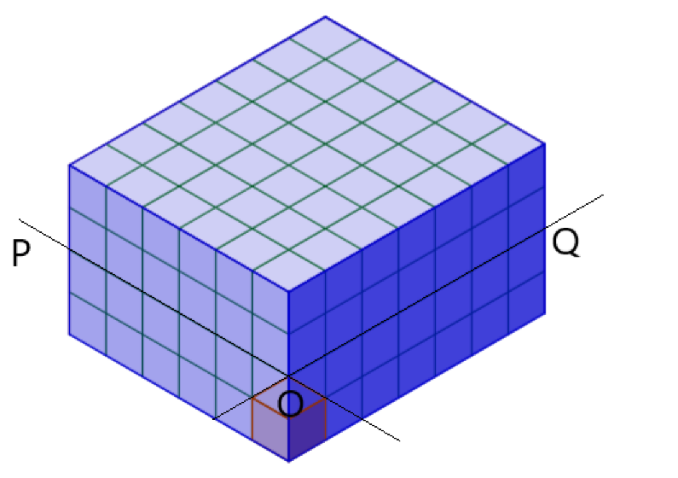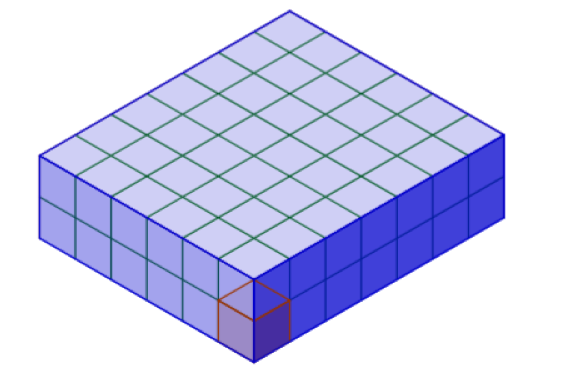
What would be the cross section of a rectangular prism that is sliced horizontally?
Answer
434.7k+ views
1 likes
Hint: In order to find the cross section of a rectangular prism first we should know what is the cross section. A cross section refers to the shape we get after cutting out an object, either horizontally or vertically.
Complete answer:
We are given with a rectangular prism, which means that the length, breadth and height would not be the same.
When we cut and find the cross-section of the rectangular prism, we can see that there are different types of cross section, we get. For example, if we divide it vertically, maybe its length and breadth becomes equal and can give out a square, or may be a rectangle. Similarly, for other cross sections.
But, if we are cutting it in two parts horizontally, the base would remain a rectangle only, its height and breadth may get changed and so, we would again get a rectangular object most probably.
Let’s see with an example of a rectangular prism which is sliced horizontally from point POQ and, we get:
Before Slicing:

After Slicing it horizontally:

And, we obtained a rectangular figure after slicing from our example.
Therefore, the cross section of a rectangular prism that is sliced horizontally would always be a rectangle.
Note:
1) If we were given a square to find its cross section, then it can also be a rectangle as its side change’s or it can remain a square as its base would remain a square only.
2) Similarly, for other objects like cylindrical prism, triangular prism, the slicing or to find the cross-section method remains the same.
3) According to the definition of prism, the cross-section parallel to the base would always be uniform.
4) A rectangular prism is nothing but a cuboid.
Complete answer:
We are given with a rectangular prism, which means that the length, breadth and height would not be the same.
When we cut and find the cross-section of the rectangular prism, we can see that there are different types of cross section, we get. For example, if we divide it vertically, maybe its length and breadth becomes equal and can give out a square, or may be a rectangle. Similarly, for other cross sections.
But, if we are cutting it in two parts horizontally, the base would remain a rectangle only, its height and breadth may get changed and so, we would again get a rectangular object most probably.
Let’s see with an example of a rectangular prism which is sliced horizontally from point POQ and, we get:
Before Slicing:

After Slicing it horizontally:

And, we obtained a rectangular figure after slicing from our example.
Therefore, the cross section of a rectangular prism that is sliced horizontally would always be a rectangle.
Note:
1) If we were given a square to find its cross section, then it can also be a rectangle as its side change’s or it can remain a square as its base would remain a square only.
2) Similarly, for other objects like cylindrical prism, triangular prism, the slicing or to find the cross-section method remains the same.
3) According to the definition of prism, the cross-section parallel to the base would always be uniform.
4) A rectangular prism is nothing but a cuboid.
Recently Updated Pages
Express the following as a fraction and simplify a class 7 maths CBSE

The length and width of a rectangle are in ratio of class 7 maths CBSE

The ratio of the income to the expenditure of a family class 7 maths CBSE

How do you write 025 million in scientific notatio class 7 maths CBSE

How do you convert 295 meters per second to kilometers class 7 maths CBSE

Write the following in Roman numerals 25819 class 7 maths CBSE

Trending doubts
Full Form of IASDMIPSIFSIRSPOLICE class 7 social science CBSE

What does R mean in math class 7 maths CBSE

How many crores make 10 million class 7 maths CBSE

Fill in the blanks with appropriate modals a Drivers class 7 english CBSE

The southernmost point of the Indian mainland is known class 7 social studies CBSE

Convert 200 Million dollars in rupees class 7 maths CBSE





